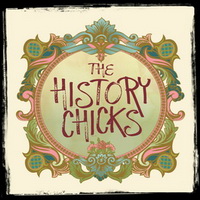by The History Chicks | Apr 27, 2012 | Biography Episode, Episode, Podcasts
With this episode we continue our series on the Tudors. Henry, Henry, Henry… First Catherine of Aragon didn’t produce, so you divorced her. Then Anne Boleyn failed as well, so you took care of that nuisance. In this episode we talk about the last four of your wives, or as we like to call them, Mommy, Sister, Party and Lucky.
First up, Jane Seymour! Henry VIII had his eyes set on Jane before Anne Boleyn was even out of the picture. She was born about 1504, and may have finished her education in France in service to Henry’s sister, Mary when she was Queen of France. Jane may have even come to Henry’s court in service to wife number one. It is known that she was a Maid of Honor to Anne Boleyn. And oh, how much fun do we have realizing what a wife/mistress feeding trough those ladies are to Henry VIII? (Lots.)
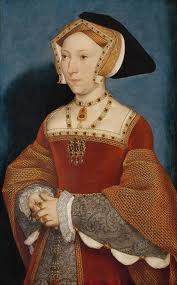
- Jane Seymour: Wife #3
Jane’s brothers were also in service to King Henry VIII, and she was probably used as a pawn for family gain, but Henry wasted no time- betrothing her within 24 hours of Anne Boleyn’s execution.They were wed within two weeks.
We all know what Henry was after, a male heir. Jane looked like a promising vessel to bring that to him. Henry’s illegitimate- but recognized- son, Henry Fitzroy, died shortly after the marriage at age 17. With that, the back-up plan crumbled and Henry has no heir options.
We talk a bit about what happened in this short marriage during the podcast, but Jane is pregnant within a year and gives birth to a son, Edward, who would one day, briefly, succeed Henry VIII as King.
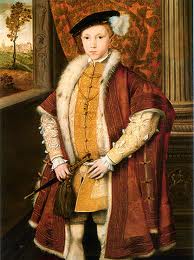
- Future King Edward VI, Henry! You got a male heir!
Sadly, the hand that was dealt to his mother, Jane, was not so kind. She died of complications from childbirth about two weeks after Edward’s birth.
Henry needs a wife! So he quickly put his people on the task of finding one. The fate of his previous wives has people rethinking the Get This Daughter Married to Henry to Further Our Family strategy. Pickings are getting slim, and political gain is the main objective.
Enter Anne Of Cleves.
Born in 1515 to John, Duke of Cleves and his wife Mary, Anne was intelligent, meek and proficient in needlework (which is middle ages speak for “She has a great personality”). Lord Cromwell sticks his nose into the scene yet again. He thinks that this Protestant German Princess, or her sister Amelia, is the ticket. Henry sends an artist to paint portraits of the women, sees Anne’s and signs the deal.
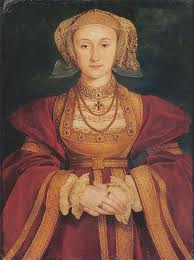
- The bait and switch pic
Anne was a very charming teenager of about 19, but she was far from the image that the King saw. The artist may have been mesmerized by her personality when he painted the portrait in her best light, and also neglected to add the smallpox scars that dotted her face. She was simple, spoke no English and was quite unsophisticated by English court standards.
But Henry really isn’t marrying her for her looks, merely for political gain. She travels from her home land to England, and they are married in January but Henry can’t take it. He claims that the marriage was never consummated, pulls some of his old tricks out of his pocket, and they are divorced by July.
But Henry wasn’t heartless, and he did seem to care for Anne. He sets her up, treats her like a sister and she lives her days out happily in England and- in 1557-she is the last of Henry’s wives to die.
But that doesn’t solve the Queen problem- Henry needs one. Court has always been a good place to look and he quickly finds his next vic…wife. Kathryn Howard.
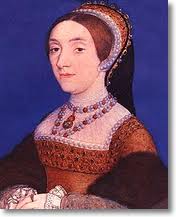
- Girls just wanna have fun…Kathryn Howard
Kathryn was born in 1521, the daughter of Lord Edmund Howard, who was the younger brother to the Duke of Norfolk who we have discussed before ( sneaky!). Kathryn was also the first cousin to Anne Boleyn. Her mother had died when Kathryn was nine and she was sent to live with her Step-grandmother. During this time, Kathryn probably did not have much guidance because she began her party-girl ways very early, having suspected lovers before she was sent to court to serve as – yes!- Lady in Waiting to Anne of Cleves.
This is where Henry falls for the beautiful young (19) Kathryn. A mere 16 days after his annulment from Anne, Henry VIII takes his fifth wife, Kathryn. He is quite smitten, calls her his, “rose without a thorn” and claims her to be the,”jewel of womanhood”.
But Henry, almost 50, overweight with an ulcerated leg is not exactly the most attractive man around. Oh, no. And Kathryn? She’s young and fun and after a year still not pregnant. She is linked to liaisons with several men; charges that she has had affairs materialize. Henry is devastated. He has the men executed and within two years of marriage, Kathryn and her Lady in Waiting, Jane Parker Boleyn, (she had been married to Anne’s brother George) are sent to the Tower of London. Kathryn meets the same fate as her cousin, and is beheaded and buried near her.
Poor Henry, another wife gone. And heartbroken to boot! (insert tiny violin here). Obviously his wife finding methods were faulty, this next time will be different.
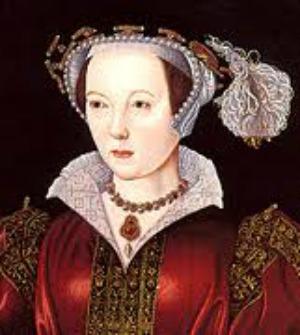
- Catherine Parr, Henry ended on a strong note
Enter Catherine Parr. Her parents, Sir Thomas and Lady Maud Parr served under Henry VIII. Her mother was a Lady in Waiting to Catherine of Aragon, and her father was the Controller of the Household. Catherine Parr may have been educated with Princess Mary who was only 4 years younger. She was bright, educated, refined and married, and widowed, by age 20.
Her second marriage lasted longer, although by age 30 she is once again a widow.
She then fell in love with Thomas Seymour, brother to late Queen Jane, Uncle to Prince Edward, but Henry put a stop to that. His options for his next wife were becoming limited and he looked at this woman that he had known for a very long time and knows what he wants. He convinces Catherine to break ties with Thomas, and marry him.
She does.
She is a very loyal wife, a good companion to the aging, almost bed ridden, 300 pound monarch. She took her Queenly duties seriously and handled them with a composed and mature manner. Henry named her Regent when he headed off to invade France, showing his trust for her. We talk in details about the four year marriage, but Catherine was a good Queen and a provided stability to the royal family.
Her release from her duties came when Henry VIII died. Within four months she married the love that she had given up to serve her King, Thomas Seymour. She would give birth to a daughter, Mary Seymour, but died of complications of the birth at the age of 36.
Phew! What a wild ride! Divorced, beheaded, died, divorced, beheaded, survived- those were the wives of King Henry VIII.
TIME TRAVEL WITH THE HISTORY CHICKS
Please go back and look at the media recommendations for the entire Tudors series. There is some great stuff out there for you to learn more. But if we had to recommend one book for this episode it would be this:
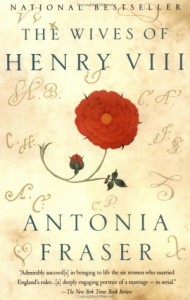
Okay, we love books. And we don’t hesitate one second to recommend historical fiction, especially Philippa Gregory historical fiction.
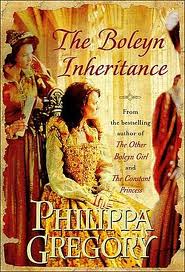
The Boleyn Inheritance
PBS has a really excellent resource for an easy overview of all the wives with this, The Six Wives of Henry VIII
We also keep recommending this website for Tudor information. Great for homeschoolers, or the self-learners, or anyone who wants a quick read on the people of this era. Luminarium.org
Ahh, Twitter. Yes, you can get character tweets by following (only listing those with recent activity) Jane Seymour. Catherine Parr, Anne of Cleves, and Kathryn Howard all have accounts that seem to have been abandoned. If one of those women is your favorite, it seems like you have a project, right?
A Knight’s Tale is available for streaming on Netflix.

- You only get this reference if you listen to the podcast
As always, music provided by MusicAlley. Visit them at Music.mevio.com
by The History Chicks | Apr 14, 2012 | Episode, Field Trips, Podcasts, Special
Named after the Titans of Greek mythology, and advertised as “The ship of wonders” and “The floating palace , Titanic began her maiden voyage filled with passengers and crew of all class levels. On the dark and moonless night of April 14th, 1912 the ship steamed through the icy waters of the north Atlantic en route to New York. What happened near midnight, and over the course of the next two hours, is well documented: the ship struck an iceberg which caused catastrophic damage to the hull. Despite press claims of being unsinkable, by 2:10 AM on the 15th of April, Titanic begins her journey to the bottom of the sea, taking just over 1,500 people with her. The stories of those people and the history of that night- that ship- continue to grimly fascinate 100 years later.
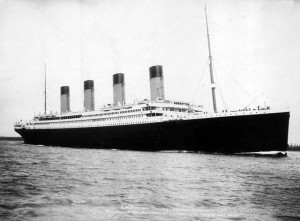
RMS Titanic
It was all those histories that sent us to view Titanic: The Artifact Exhibition at Kansas City’s Union Station. The building itself amazes us, built in 1914 and closed in 1980, it was renovated and opened again to the public in 1999. Union Station is now home to an Amtrack station,shops,a museum,an interactive science center, and more as well as hosting traveling exhibits such as the one that we toured recently.

Kansas City’s Union Station -it’s a really cool building.This is only a tiny part of it.

Facing the walkway that takes people from Union Station to Crown Center- another really fun thing to visit here
This episode tracks that adventure for us. While photography is not allowed in the exhibit, we thought that it would be fun to bring you along with us via recording device as we toured the collection of memorabilia. The $19.12 adult admission made us smile, and the entire exhibit sparked discussion and imagination. We did our best to describe what we were looking at and touching…we touched part of the Titanic! (insert girly squeal here).
Vocabulary lesson: The term “poop deck” comes from the latin word puppis meaning aft or stern. The poop deck is a partial deck above the ships main afterdeck.
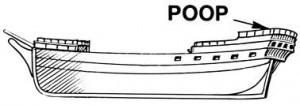
- As disappointing as this is, it’s still fun to say.
Also Puppis is a constellation…but before you get 12 year-old giddy, it represents the stern of a ship. Hey, one of us is bumming with you.
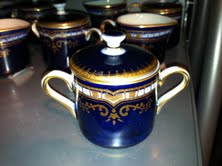
In the gift shop, replicas of first class china

Second glass china
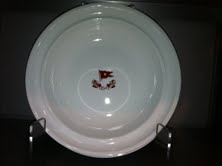
Third Class China
Yes, we could have taken more pictures in the gift shop, but didn’t think you cared to see all the merchandise with “Titanic” emblazoned across it. We didn’t buy anything.
http://www.youtube.com/watch?v=FSGeskFzE0s
Books:
Love love love this one. The Watch the Ends the Night by Allan Wolf. Own love. That much! The story of the Titanic is told through poems and dialogs from the point of view of two dozen passengers and crew. Some who survived, some who did not but all speak of their lives and the experience of April 14, 1912. I felt greedy sitting down and snarfing the whole book. I wanted to take it in short bites and savor each piece like really fine chocolate.

Watch that ends the night, voices from Titanic by, Allan Wolf.
If you happen to find yourself in Kansas City, you really should check out Union Station. Here is a link to the events and things that will await you there.
by The History Chicks | Apr 7, 2012 | Biography Episode, News, Podcasts, Shownotes
Imagine that you followed your heart to live an honest life doing what you felt was right: working hard, marrying for love, aiding others, traveling and always, always learning. You were a wife, a mother, a socialite, an activist, a suffragist, and a citizen of the world. You were adored by many, inspired more and lived life in the fullest, kindest way that you could imagine. And, when you died, your impressive life story was altered to one that was almost beyond recognition. Often for the worse!
That’s what happened to Margaret Tobin Brown. You might know her as Molly Brown- the Unsinkable Molly Brown. A woman whose real life story was so much more impressive than the one that was assigned to her after her death.
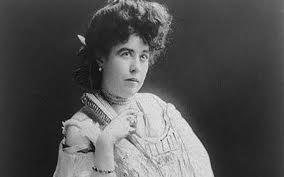
That’s a fan, not a pick ax! Margaret Brown: socialite, activists. mother, strong and educated woman. Not an uneducated gold digger.
Margaret Tobin was born a middle child of John and Johanna Tobin in Hannibal, MO on July 18, 1867. Her parents had ridden a wave of Irish Catholic immigration during a Potato Famine and landed in this western railroad stop of a town . John worked as a laborer for a variety of businesses while his children attended school and played in the same woods as another Hannibal resident had years before: Samuel Clemens.
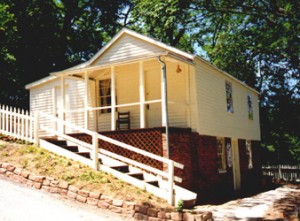
The reconstructed Tobin family home in Hannibal, MO
The Tobin children had no more, and no less, than most of their neighbors. It was a frugal childhood, but not the miserable, motherless one of the fables of her life.
And another fable? She wasn’t called Molly, she was called Maggie or Margaret. Molly was just another fabrication to fuel the poor-Irish-upbringing image the media had created for her.
Oh! We could carry on about all the inaccuracies in the story of her life…oh, wait, we do. More details are in the podcast about how she traveled as a teenager to Leadville, CO looking to improve her life. How she worked hard and loyally first at a cigar factory in Hannibal, then in a department store in Leadville. How she wanted a better life for herself and her family and how she married for love, not for money.
Margaret and James (J.J.) Brown set up housekeeping in Leadville. They took on a little domestic help and hired tutors to continue their own education. Margaret’s family from Hannibal moved up, and they all became an integral part of a very tight community. Margaret was very active in civic activities. This wasn’t some dainty, wihte glove wearing woman (although she probably did wear them) she wasn’t afraid to roll up her sleeves to help those less fortunate than her. She was well liked, and liked many- the Browns were pillars of Leadville society. Soon they added two children to their family, Lawrence and Helen.

The James Brown family in Leadville, CO
Not overnight, and not by sheer luck, J.J. hit it rich. Gold. (This is the only gold digging in Margaret’s story!)
Leadville had been a silver mining town, but politics got in the way and the price of silver had plummeted. J.J’s mine, the Little Johnny Mine, was a boon to the town AND the Browns. They hadn’t been living in squalor, the family was very much middle class. But suddenly, they found themselves in a very different class. They were moving to the big city of Denver.

What was life like for the Browns in Denver? They fit very well into society. Not a tiny elitist portion, but the portion where most of the people of means were hanging. They traveled the world, entertained at home and abroad and educated their children in a variety of very fine schools both in the States and Europe. And Margaret? She was very much a civic minded lady and her former Leadville soup kitchen activites turned grander and more income generating. She was charming, knew the right people and knew how to separate the rich from their money for a good cause- she knew how to get stuff done.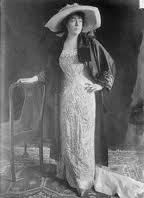
Doesn’t really sound like the activities of a woman who didn’t fit into society, does it? Listen to the podcast for the details of this time in her life, but at some point, Margaret and J.J. separated. They would never divorce, but live together they could not. J.J. was a workaholic, and Margaret, quite busy with her own endeavors as well as the travel (which she adored)- she had outgrown Denver and housewife duties. We name drop big time when we discuss the circles she traveled in but at this point Margaret was dividing her time between Newport, Europe and Denver living large and in charge where ever she went.
Yadda Yadda…she ends up on the Titanic.
Margaret’s actions on that fateful voyage were the stuff movies are made out of. She did help people in her lifeboat, she did attempt to get the lifeboat to return to see if there were survivors, she did row (as did other woman in the lifeboat),she did share her clothing, she was level headed…stripping down to almost nothing, cracking jokes and singing bar songs? Prolly not. But Margaret had spent her life helping people, she was smart and knew how to take command of a situation- those skills all would come into play during the hours in Lifeboat #6.
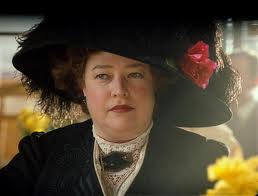
Once rescued by the Carpathia hours after the Titanic sank, Margaret and her caring ways really sprang into action! No resting in First Class for this woman, she was tending to the needs of all the recued passengers and shaking down the one’s that were traveling on the Carpathia. By the time they docked in New York, she had plans in place to keep track of -and get promised funds to- survivors; she had thousands pledged and plans to get more. With a heart bigger than her hat, she made sure that blame was placed properly, and heroism rewarded.

After Titanic, presenting gifts of thanks to the Captain of The Carpathia
In the years following the Titanic portion of her life, Margaret continued to travel, was deep in Newport society, attempted to run for a state Senate position, continued to be an advocate for those who she felt needed one, and never stopped learning. She died at the age of 65 in 1932 while in New York studying acting.
Margaret Brown was a multidimensional, big hearted, smart woman with charm and personality. The myths that surround her life, while entertaining, are not nearly as fascinating as the real life of this remarkable woman.
Time Travel With The History Chicks
Books! The first one we loved a lot, had so many,”Wow! She was a rockstar! Who knew!?” moments for us:
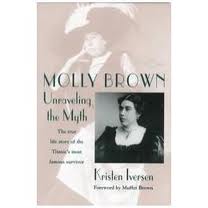
Molly Brown: Unraveling the Myth by Kristen Iversen
The second is a kids’ book, but we thought it did a fun job of telling her philanthropic story (and the photos were terrific):
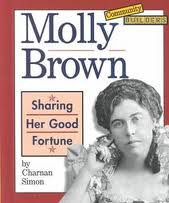
Molly Brown: Sharing Her Good Fortune by Charnan Simon
We love our museums! If you are in Denver, check out the Molly Brown Museum which is in the former Brown home. And a related blog with some really wonderful posts, Between the Lions.
Near Hannibal? The Molly Brown Birthplace and Museum will show you where she began her adventure and developed the strong character that would propel her through life.
There is a brand new… museum? Theme establishment? Convention center? Birthplace of The Titanic?Not quite sure what it is exactly, but it’s pretty cool looking and sits where the Titanic was built in Belfast, Ireland. Titanic Belfast
Curious about Leadville? We were and found lots of answers here!
What about mining Ghost Towns of Colorado? This site is very fun to poke around on, Coloradopast.com, they have pictures of how the Little Johnny Mine looks today, as well as other signs of Colorado’s past. Links to some other Ghost Towns in the US, and lots of beautiful regional photography as well.
Ok, we carry on about how painful this was for us to watch, but you don’t have to believe us! You can experience the same pain (now that you know the real story of her life):
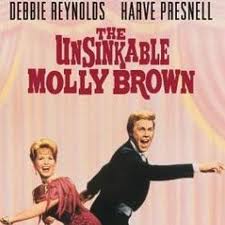
The Unwatchable Molly Brown
As always, music comes courtesy of Music Alley. Visit them at Music.mevio.com
by The History Chicks | Apr 1, 2012 | Biography Episode, Episode, Podcasts
In this minicast we discuss the life of of Henry VIII’s most talked about wife-Anne Boleyn. Of all the six she lives on in story, speculation and fascination although she had a longer run attracting the Queen’s crown than she actually wore it. Anne died only four months after Henry’s first wife! (and by “died” we mean Henry had her executed.)
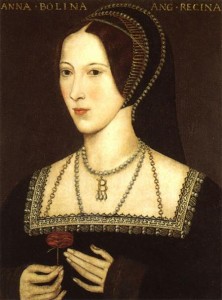
Anne was the daughter of Sir Thomas and Elizabeth Boleyn. While she was of noble birth, very little is know about her early years. We know that she was one of three children born to the Boleyns. We know that she was raised Catholic, but converted to Protestantism at some point.That her father was a diplomat serving under Henry VII and, later, under Henry VIII and, while it was probably expected that the Boleyn children would land at court and that they would have been educated for that role-the details are lost. There is not even a consensus as to what year Anne was born! Maybe 1500, maybe 1509, probably close to the former, but you want exact? Good luck.
It is known that she was presented and served under the Archduchess Margaret of Austria. That she accompanied Mary Tudor ( the sister to Henry VIII) to France for her marriage to Louis XIII, and that she stays there to serve Queen Claude. But, like her early years, not a lot is recorded about her age, and these years.
What else is known? When she returned to England she was very Frenchified. Anne had learned a great deal in France about court life: dress, dance, etiquette, languages. Her sister Mary had a similar court based education and had “matriculated” earning honors in horizontal games. ( Yes, we are being childish and euphemistic, we’ll own that!)

Mary Boleyn, the more"giving" sister
Anne did not see that method as her key to attaining the position she desired. She attracted several suitors and even had a rather scandalous betrothal that did not culminate in a marriage. We go into details during the podcast, but let’s just say Anne’s methods of attaining position had little to do with giving in, and everything to do with attracting.
Upon her return from France, her father sends her to court to be a lady in waiting to Queen Katherine. There, the already married King Henry VII quickly falls for her charms. What ensues is the history that is known about her life.
How she would not give in to the Kings advances, unlike her sister Mary. (Oh, we love us some smutty tales!)
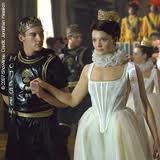
Speaking of smutty tales...we like Showtime's, The Tudors, but as entertainment, not entirely historically accurate.
How she kept her eye on the prize: the Queen’s Crown although it rested on the head of Katherine of Aragon at the time.
How she played this game with Henry for years while he attempted to leave Katherine, and how she ultimately aided the King in breaking from the church, Katherine and marrying her.
Once crowned Queen she wasn’t exactly the most popular, especially riding the heels of the adored Katherine. But part of Anne’s allure, part of the carrot she dangled to snare Henry was that she could do what Katherine had failed: Produce and heir.
Well, she did, but not what Henry had in mind. He wanted a son and the only living child to come from Anne was a daughter, Elizabeth.
Soon, Henry was dipping into the affair pool that was the ladies- in- waiting to the queen. He has several affairs and finally spies his next wife among them- Jane Seymour.
But he has to get rid of Anne before he can marry this beauty who surely will give him the son he so desires. Being King he gets his people on it. Soon many are arrested -including Anne- on grounds that she had an affair. The charges? Incest! Adultry! Treason! Included in the pack: Anne’s own brother George! Oh you have to listen to the podcast, we go into much more detail and specualtion and drama. Oh, the drama! But this was swift justice on trumped up charges and the final outcome for Queen Anne?
Off with her head!
On May 19, 1536, Anne Boleyn is beheaded.
It was a short reign, but the changes to England that took place during it changed the course of history. And, think what you will about Anne, but she gave birth to the woman who would one day change England again, Queen Elizabeth I.
Time Travel With The History Chicks
Books!
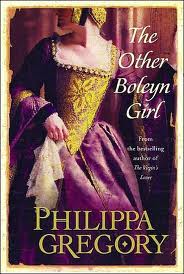
Can't go wrong with some historical fiction by Philippa Gregory!
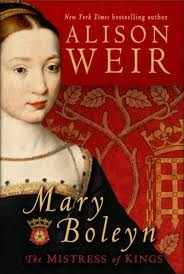
Or some Alison Weir!( Yes, this is about Mary, not Anne, but we thought you might be interested in her,too.)
Blogs? There are QUITE a few out there, but here are a couple that might get you started learning more about Anne Boleyn. ( Just because she wasn’t our favorite wife, doesn’t mean that everyone agrees. Come on, plenty of wives to go around!) Check out The Anne Boleyn Files and On the Tudor Trail .
Follow Anne on Twitter!
As fodder for drama, none come close to Anne Boleyn. Romance, intrigue, allure, politics, religion, scheming…and more all swirled around the fast life of this woman whose motto was, “The Most Happy”.
Music courtesy of Music Alley. Visit them at Music.mevio.com
































